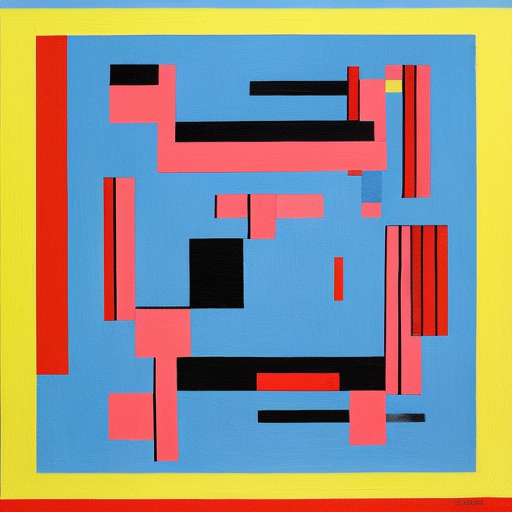Summary:
Suprematism was an art movement that emerged in Russia in the early 20th century, led by Kazimir Malevich. It focused on geometric shapes and non-objective art, rejecting representation and emphasizing the purity of form and color. Suprematism had a significant influence on modern art and design, inspiring artists and architects around the world.
Origins and Key Concepts
Suprematism originated in 1915 when Malevich exhibited his groundbreaking painting, “Black Square,” which became the movement’s iconic symbol. The movement aimed to transcend the limitations of representational art and explore the fundamental elements of visual expression. Malevich believed that art should be free from the constraints of depicting the physical world and should instead focus on the spiritual and emotional aspects of creativity.
Characteristics and Style
Suprematist artworks were characterized by their use of simple geometric shapes, such as squares, circles, and lines, often arranged in a non-hierarchical manner. The movement rejected the use of color to represent objects or convey emotions, instead emphasizing the pure visual experience of color itself. Suprematist compositions were often asymmetrical and dynamic, creating a sense of movement and energy.
Suprematist Manifesto
In 1915, Malevich published the “Suprematist Manifesto,” which outlined the principles and goals of the movement. He argued that Suprematism represented the “zero degree” of painting, where art was reduced to its most essential form. Malevich believed that Suprematism had the potential to revolutionize not only art but also society as a whole, by breaking free from the constraints of the past and embracing a new, abstract language of form and color.
Influence and Legacy
Suprematism had a profound influence on the development of modern art and design. Malevich’s ideas and aesthetic principles inspired artists around the world, including the Constructivists and De Stijl movement. Suprematism also had a significant impact on architecture and design, with its emphasis on geometric forms and abstraction influencing the work of architects such as Le Corbusier and the Bauhaus school.
Criticism and Decline
Despite its initial success and influence, Suprematism faced criticism from both the Soviet government and other artists. The Soviet authorities, who favored more politically engaged art, condemned Suprematism as elitist and disconnected from the needs of the working class. Additionally, some artists felt that Suprematism lacked a human element and failed to address social and political issues. By the late 1920s, Suprematism had declined in popularity, and Malevich himself moved away from the movement, exploring other artistic styles.
Revival and Contemporary Relevance
In recent years, there has been a renewed interest in Suprematism and its legacy. The movement’s emphasis on abstraction, geometry, and the exploration of pure form continues to resonate with contemporary artists and designers. Suprematism’s influence can be seen in various fields, including graphic design, fashion, and architecture. The movement’s radical ideas and innovative approach to art continue to inspire and challenge artists to push the boundaries of creativity.
In conclusion, Suprematism was a groundbreaking art movement that emerged in Russia in the early 20th century. Led by Kazimir Malevich, Suprematism rejected representation and focused on the purity of form and color. The movement’s geometric shapes and non-objective art had a profound influence on modern art and design, inspiring artists and architects around the world. While Suprematism faced criticism and declined in popularity, its legacy continues to be relevant in contemporary art and design.












